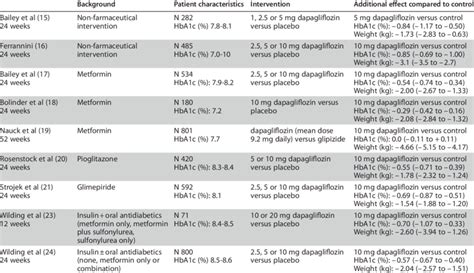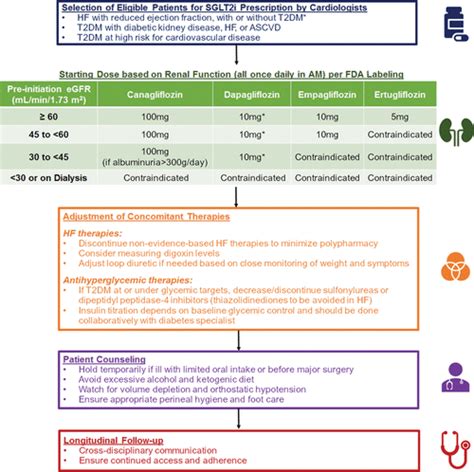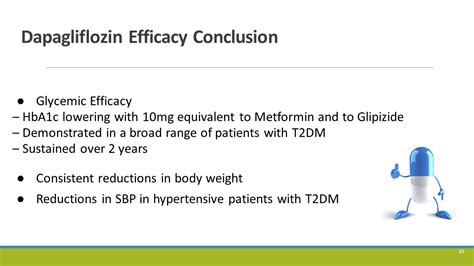Intro
Discover key facts about Dapagliflozin 10mg, a sodium-glucose cotransporter 2 inhibitor, used in type 2 diabetes treatment, improving glycemic control, and reducing cardiovascular risk, with benefits including weight loss and blood pressure management.
Dapagliflozin is a medication that has gained significant attention in recent years due to its effectiveness in treating type 2 diabetes and its potential benefits in other areas of health. As a sodium-glucose cotransporter 2 (SGLT2) inhibitor, dapagliflozin works by preventing the kidneys from reabsorbing glucose back into the blood, thereby increasing glucose excretion through urine. This mechanism of action not only helps in lowering blood sugar levels but also has implications for weight management and cardiovascular health. Here, we will delve into five key facts about dapagliflozin 10mg, exploring its uses, benefits, and what patients can expect from this medication.
The importance of understanding dapagliflozin lies in its unique approach to managing diabetes. Unlike traditional diabetes medications that focus on increasing insulin sensitivity or secretion, SGLT2 inhibitors like dapagliflozin offer a novel pathway to glucose control. This distinction is crucial for patients who may not respond well to conventional treatments or those seeking alternatives with potentially fewer side effects. Moreover, the role of dapagliflozin in addressing comorbidities associated with diabetes, such as hypertension and heart failure, underscores its value in comprehensive patient care.
As the medical community continues to explore the full potential of dapagliflozin, it's essential for patients and healthcare providers alike to stay informed about the latest developments and research findings. This includes understanding the appropriate dosage, potential side effects, and the importance of monitoring while on this medication. Dapagliflozin 10mg, in particular, has been a subject of interest due to its balanced efficacy and safety profile, making it a common prescription strength for many patients. By examining the facts surrounding this medication, individuals can better navigate their treatment plans and make informed decisions about their health.
Introduction to Dapagliflozin 10mg

Benefits of Dapagliflozin 10mg
The benefits of dapagliflozin 10mg are multifaceted, extending beyond mere glucose control. Some of the key advantages include: - **Improved Glycemic Control:** Dapagliflozin 10mg has been shown to significantly reduce HbA1c levels, which is crucial for preventing the complications associated with diabetes. - **Weight Loss:** By increasing glucose excretion, dapagliflozin also leads to a loss of calories, which can result in weight loss. This is particularly beneficial for patients with type 2 diabetes who are also struggling with obesity. - **Cardiovascular Benefits:** Research has indicated that dapagliflozin may have beneficial effects on cardiovascular outcomes, including reduced risk of heart failure and renal outcomes.Working Mechanism of Dapagliflozin 10mg

Potential Side Effects and Considerations
While dapagliflozin 10mg is generally well-tolerated, there are potential side effects and considerations that patients should be aware of: - **Increased Urination:** One of the most common side effects is the need to urinate more often, which can be a result of the increased glucose excretion. - **Genital Mycotic Infections:** There is an increased risk of genital infections, particularly in women, due to the higher glucose concentration in the urine. - **Hypotension:** Dapagliflozin can cause a mild diuretic effect, leading to hypotension (low blood pressure) in some patients.Practical Considerations for Patients on Dapagliflozin 10mg

Future Directions and Research
The future of dapagliflozin 10mg looks promising, with ongoing research exploring its potential in treating other conditions beyond type 2 diabetes. This includes its use in patients with heart failure, regardless of diabetes status, and its potential benefits in slowing the progression of kidney disease. As more data becomes available, the role of dapagliflozin in comprehensive patient care is likely to expand, offering new hope for individuals managing complex health conditions.Conclusion and Next Steps

We invite you to share your thoughts and experiences with dapagliflozin 10mg. Have you or a loved one been prescribed this medication? What benefits or challenges have you encountered? Your insights can help others navigate their treatment journeys. Please comment below, and let's continue the conversation on social media using relevant hashtags. Sharing this article with others who might benefit from the information can also contribute to a more informed and supportive community.
What is the primary mechanism of action of dapagliflozin 10mg?
+Dapagliflozin 10mg works by inhibiting the sodium-glucose cotransporter 2 (SGLT2) in the kidneys, leading to increased glucose excretion through urine and thereby lowering blood glucose levels.
What are the common side effects of dapagliflozin 10mg?
+Common side effects include increased urination, genital mycotic infections, and hypotension. It's essential for patients to stay hydrated and monitor their condition closely.
Can dapagliflozin 10mg be used in patients without diabetes?
+Research is ongoing into the potential benefits of dapagliflozin in patients without diabetes, particularly in those with heart failure. However, its primary approved use remains in the treatment of type 2 diabetes.
